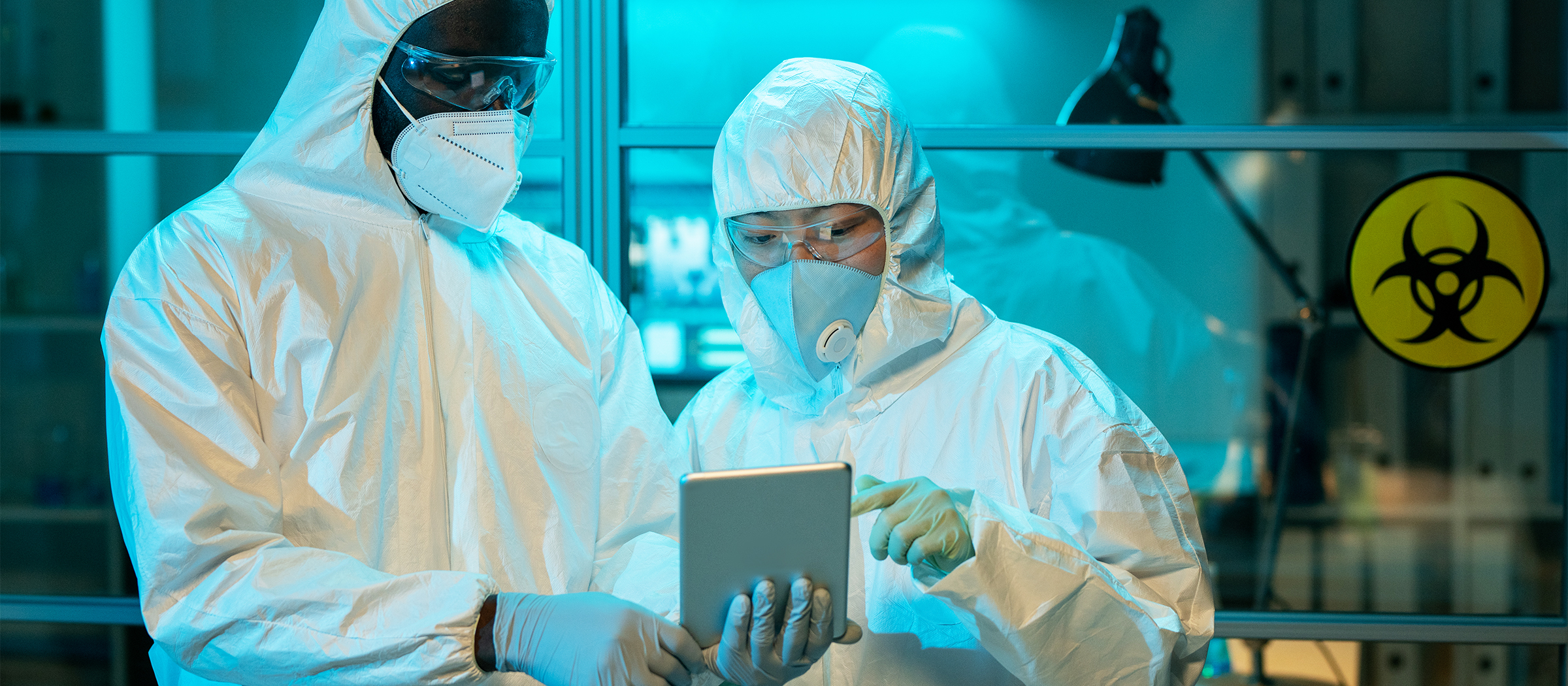Stay Safe in Clinical Labs: Safe Laboratory Practices You Should Master
Safe laboratory practices are essential in clinical laboratories to ensure the safety of all lab tech personnel and maintain the quality and accuracy of laboratory results. Using lab safety equipment can protect a clinical technician, but adhering to laboratory safety rules prevents accidents and minimizes the risk of exposure to hazardous materials.

10 Laboratory Safety Rules in Clinical Laboratories
So what are the 10 laboratory safety rules? We have compiled the safe laboratory practices everyone must know and follow to become integral in creating a safer and more productive laboratory environment.
1. Maintain Good Hygiene and Cleanliness
Good hygiene practices such as hand washing and disinfection of surfaces and equipment using the right isopropyl alcohol maintain a sterile working environment. Such clinical lab safety practices ensure the results are accurate and the lab personnel are safe.
2. Wear Proper Personal Protective Equipment
Wearing PPE such as lab gloves, safety goggles, and masks and using lab safety supplies prevent exposure to potentially harmful substances, infectious agents, and other biological hazards that may result in injury or contamination.
3. Stay Focused and Alert
Being mindful of the surroundings, procedures, emergency exits, and potential hazards makes a huge difference. Avoid using headphones or any other distractions to prevent clinical lab safety hazards.
4.Work With a Partner
Working in pairs or teams in clinical pathology laboratories ensures better quality control and reduced errors. This setup guarantees that another person can assist promptly during an emergency.
5. Use Proper Lab Storage Containers with Labels
Using lab storage containers helps prevent unwanted chemical reactions that can affect the results or cause hazardous situations. These containers must be labeled, with their contents, expiration dates, lab safety symbols, or handling instructions written on quality lab tape that strongly adheres but removes easily. For proper laboratory waste disposal, biohazard waste containers must be used and may be placed inside disposal boxes to ensure zero leaks, spills, and contaminations.
6. Handle Batteries Properly
Lithium-ion and lead-acid batteries may leak and cause hazardous situations if used and stored improperly. They must be kept in safe and proper storage, away from common lab chemicals and materials.
7. Manage Biological Materials and Waste
The mishandling of biological materials, misuse of a biosafety cabinet, and improper disposal of hazardous waste can cause the spread of infectious agents and increase the risk of contamination. Correct usage of a biological safety cabinet and strict adherence to biosafety protocols ensure the safety of clinical technicians and their surrounding environments.
8. Regularly Inspect Electrical Equipment
Regular inspection of electrical equipment identifies potential issues like damaged insulation or worn cords that could lead to accidents. It also ensures the equipment functions properly and complies with laboratory safety regulations.
9. Strictly No Eating or Drinking in the Lab
Any food or drink in clinical laboratories may introduce particles or microorganisms that can contaminate samples. Lab chemicals may also react with food or drink, affect the results, or lead to dangerous reactions.
10. Join a Comprehensive Safety Training Program
Clinical lab safety training or exercises help clinical technicians familiarize themselves with the location and use of lab safety equipment. Participating in these activities makes them better equipped to prevent accidents and assist fellow lab personnel whenever necessary.
Common Safe Laboratory Practices and Essential Questions Answered
Clinical laboratory safety ensures patients are protected, test results are accurate, and lab tech personnel are safe.
Lab safety practices help protect laboratory personnel and their environments from hazards such as chemicals, biological agents, and radiation. Proper laboratory safety protocols help prevent accidents, injuries, and exposure to dangerous substances.
Lab safety hazards include toxic or flammable chemicals, infectious agents, sharp objects, repetitive motion injuries, exposure to extreme temperatures, fire and explosions, and contact with radioactive materials.
PPE stands for Personal Protective Equipment and includes lab coats, safety glasses, shoe covers, and lab gloves. It protects the safety and health of every clinical technician from harmful chemicals, radioactive substances, and biological agents.
Isopropyl alcohol can last two to three years from its manufacturing date but may expire much faster if the container is frequently opened and exposed to the air. The alcohol evaporates over time and becomes less effective as a disinfectant or antiseptic.
Sources:
https://ehs.ucsc.edu/programs/research-safety/safe-lab-practices.html
https://labpedia.net/safety-in-the-clinical-laboratory/
https://www.onlinesafetytrainer.com/the-importance-of-laboratory-safety/
https://www.mcrsafety.com/blog/lab-safety
https://blog.gotopac.com/2019/07/24/what-is-the-shelf-life-of-isopropyl-alcohol-ipa-does-it-expire/
https://gotparts747.com/blogs/news/does-isopropyl-alcohol-expire

